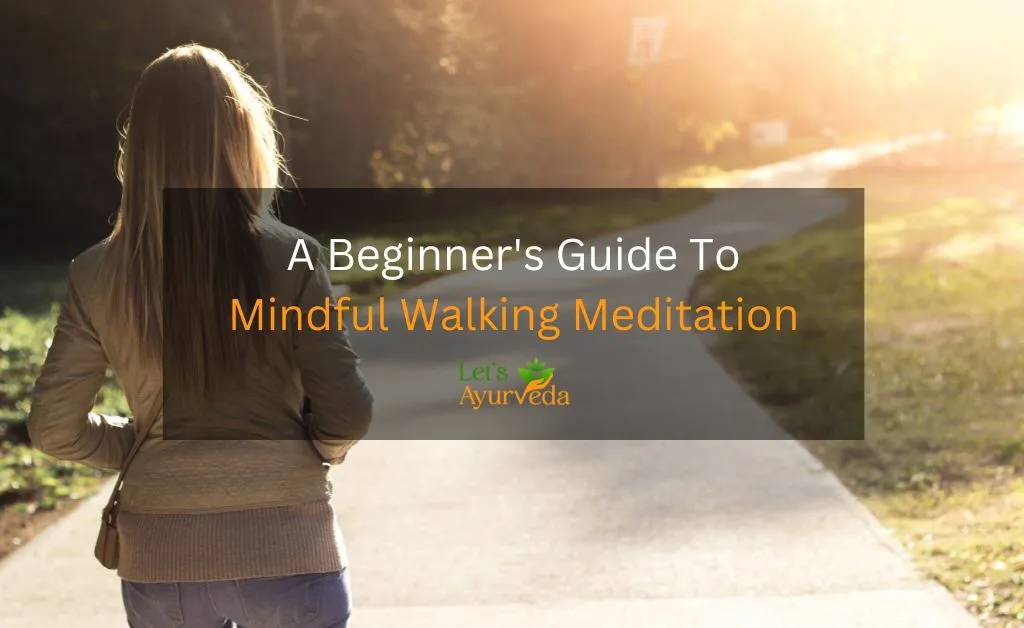Have you ever felt like you're always rushing around but not really present in the moment?
Mindful walking meditation is just what you need. It's like walking while practicing mindfulness to boost your physical and mental well-being.
Use this guide to learn about and begin practicing this life-changing technique.
What is Mindful Walking Meditation?
Mindful walking meditation is when you pay close attention to your walking. It's all about being entirely focused on each step and aware of the feelings, sights, and sounds around you. This practice has been around for a long time and is used to help people become more mindful and peaceful.
Benefits of Mindful Walking Meditation
Physical Health Benefits
Walking is excellent for your health; the benefits get even better when you add mindfulness. It can help your heart, improve blood flow, and assist with managing your weight. Plus, it's an easy exercise that most people can do.
Mental Health Benefits
Mindful walking meditation is a great way to reduce stress, anxiety, and depression. It helps you stay calm, focused, and more creative—like hitting the reset button for your mind.
Emotional Well-Being
Remembering to stay in the present moment can help you handle your feelings better and deal with situations more calmly. It's helpful to work through your emotions and not let them overwhelm you.
How to Practice Mindful Walking Meditation
Preparing for Your Walk
Designate a specific time for your walk, wear comfortable clothing, and wear shoes that are comfortable. Allocating a period is essential.
Choosing the Right Location
Pick a place where you feel safe and can walk without too many distractions. Parks, quiet streets, or even your backyard can be ideal spots.
Setting an Intention
Before you begin, set an intention for your walk. It could be as simple as "I want to feel more grounded" or "I aim to be fully present."
Step-by-Step Guide to Mindful Walking Meditation
Step 1: Start with Standing
Stand still for a moment. Feel the ground beneath your feet. Notice your posture and how your body feels.
Step 2: Begin Walking
Take your time and walk at a relaxed pace. Focus on each step you take. Notice how your feet lift off the ground and then make contact with it again.
Step 3: Focus on Your Breath
Inhale and exhale naturally. If it feels comfortable, sync your breath with your steps. Notice the rhythm and flow.
Step 4: Engage Your Senses
Take a moment to observe your surroundings. Pay attention to what you can see, hear, and smell. Feel the gentle breeze on your skin. Use all your senses to stay in the present moment.
Step 5: Notice Your Thoughts
As you take a walk, thoughts will pop into your head. Instead of getting caught up in them, notice them without judging yourself and then gently shift your attention back to your walking.
Integrating Mindful Walking into Daily Life
Making It a Habit
Try to practice mindful walking as part of your daily routine. You can do it while walking to work, during your lunch break, or set aside a specific time each day.
Combining It with Other Activities
Try combining mindful walking with other activities, such as listening to relaxing music or following a guided meditation. This can make the experience even better.
Practical Tips for Busy Schedules
Even a short, five-minute walk can be beneficial. Find small pockets of time throughout your day to practice.
Common Challenges and How to Overcome Them
Distractions
It's normal to get distracted. When your mind wanders, gently redirect your focus to your walking and breathing.
Physical Discomfort
If you feel discomfort, slow down or adjust your posture. Listen to your body and take breaks if needed.
Maintaining Consistency
Set reminders and make mindful walking a priority. Joining a group or having a walking buddy can also help.
Mindful Walking vs. Sitting Meditation
Similarities and Differences
Both practices help you be more aware of the present moment, but sitting meditation involves being still. At the same time, mindful walking consists of moving around. You can choose the one that suits your lifestyle and needs right now.
When to Choose Each Practice
Taking a mindful walk might be helpful if you feel restless or have extra energy. On the other hand, sitting meditation could be a better option if you're looking for deep relaxation and self-reflection.
Advanced Techniques in Mindful Walking Meditation
Incorporating Mantras
Using a mantra can help you deepen your meditation practice. Repeat a word or phrase that brings you peace and keeps you focused.
Walking with a Group
Walking with a group can make the experience more enjoyable. Doing this activity with others can offer support and a sense of belonging.
Using Nature as a Guide
When you walk, pay attention to the nature around you. Notice how the seasons change, listen to the birds, and feel the different types of ground beneath your feet.
Mindful Walking Meditation Around the World
Practices in Different Cultures
Various cultures have their own ways of practicing mindful walking. For example, in Japan, there's a practice called 'forest bathing.' In India, walking meditations are a part of yoga traditions.
Global Perspective
Learning from different cultures can bring new perspectives to your life. Please take a look at how people around the world practice mindful walking to enrich their daily routines.
Mindful Walking for Kids and Families
Benefits for Children
Taking a mindful walk can really help children. It can help them concentrate better, feel less worried, and enjoy the moment.
Family-Friendly Practices
Make it a fun family activity. Play games that involve observation and mindfulness to engage children.
Mindful Walking in Urban Environments
Overcoming City Distractions
Finding peace and quiet in busy city areas can be challenging, but you can still practice mindful walking. Try using headphones to block out the noise or look for more tranquil times and places to take a peaceful walk.
Finding Green Spaces
Try to find parks, gardens, or streets with lots of trees. Even small bits of nature can give you a break from the busyness of city life.
Conclusion
Taking a peaceful walk while fully present at the moment is a beautiful way to enjoy physical activity and mindfulness. It's easy to get started and can be done almost anywhere. Mindful walking can reduce stress, enhance focus, and cultivate a greater sense of presence in daily life. So, put on your shoes, set a goal, and take the first step towards a more conscious life.
FAQs
How long should I practice mindful walking meditation?
Start with 5-10 minutes of practice and slowly increase the time as you get used to it.
Can I practice mindful walking meditation indoors?
Yes, you can practice indoors. Find a quiet, spacious area to walk back and forth without distractions.
Do I need special equipment for mindful walking meditation?
No special equipment is required. Just wear comfortable clothing and shoes suitable for walking.
How do I know if I'm doing it right?
There's no "right" or "wrong" way. The key is to stay present and mindful. If you notice you're distracted, gently bring your focus back to your walking.
Can mindful walking meditation help with anxiety?
Yes, many people find that it helps reduce anxiety by promoting a sense of calm and grounding.






